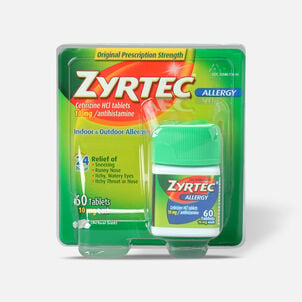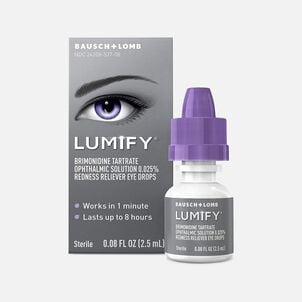Open enrollment is your opportunity to make changes to your employee benefits elections and choose health coverage that will protect you and your loved ones for the year ahead. However, if your employer offers some type of health care or child care savings/spending account, you may be missing out on hundreds -- if not thousands -- in tax savings for expenses that you will incur over the course of the coming year.
Luckily, FSAstore.com/HSAstore.com is here to help you navigate the confusion of consumer-directed spending/savings accounts to find the plan that works for your needs. Here are four of the most common offerings:

Flexible spending account (FSA) (also known as general medical FSA)
| Yearly Contribution Limits | $3,200 per FSA (2024). If both spouses have an FSA through their respective employers, they could each elect the maximum for $6,400 per household. |
| Plan Year | Most often 1 year. In limited circumstances, there may be a short plan year. |
| Eligibility to Contribute | FSA plans can only be sponsored by employers and eligibility rules are set by each plan. Employees who work for employers who offer FSA plans may contribute up to the allowed maximum per year. Self-employed individuals and owners of certain types of corporations are not eligible for an FSA. |
| Account Ownership | An FSA account is owned and set up by the employer. |
| Access to Money | An employee's yearly FSA allocation is available in full on the first day of the plan year, regardless of contributions to date. |
| Change Contributions? | FSA users can only change their contributions during their Open Enrollment periods. Some plans also allow changes to contributions to be made if the account holder experiences a Qualifying Life Event, such as marriage, divorce, or birth of child. |
| Special Rules/Eligibility Exceptions | Employers can choose one of two (or none) options to provide relief for FSA users who would otherwise have to forfeit leftover funds: the rollover (also known as a carryover) and the 2.5 month grace period. The rollover allows FSA users to move up to $640 of the previous plan year's contribution into next year's allocation (without counting against the overall contribution limit) to avoid forfeiting money to their employers at year end. The second is the FSA Grace Period, which gives users 2.5 months after the last day of their plan years to spend down their remaining FSA funds.
For more information about what an FSA can cover, visit the FSA Eligibility List. |
| Health savings account (HSA) | |
| Yearly Contribution Limits | $4,150 Individual, $8,300 Family (2024). Employee and employer contributions both count towards the limit. |
| Plan Year | There is no plan year with an HSA, funds rollover continuously each year and do not expire. |
| Eligibility to Contribute | An HSA can only be opened by a person enrolled in a qualified high-deductible health plan (HDHP) with a deductible of at least $1,600 (self-only coverage) or $3,200 (family-only coverage). The individual must not have other first dollar health insurance coverage, including an FSA. For calendar year 2024 a "high deductible health plan" is defined under § 223(c)(2)(A) as a health plan with an annual deductible that is not less than $1,600 for self-only coverage or $3,200 for family coverage, and the annual out-of-pocket expenses (deductibles, co-payments, and other amounts, but not premiums) do not exceed $8,050 for self-only coverage or $16,100 for family coverage. |
| Account Ownership | An HSA is owned by the account holder and is a bank account set up in the owner's name. Account beneficiaries can be assigned. |
| Access to Money | Remaining HSA account funds can be accessed at any time regardless of whether or not the person is actively contributing to the HSA. |
| Change Contributions? | HSA users can change their contribution amount at any time, as long as it does not exceed the yearly allocation limit. It is up to the HSA account holder to track contributions and ensure they do not exceed the annual limit. |
| Special Rules/Eligibility Exceptions | Unlike FSAs, HSAs can cover the cost of certain premiums, but otherwise follow nearly identical eligibility requirements. For more information about what an HSA can cover, visit the HSA Eligibility List. |
| Limited care flexible spending account (LCFSA) (also known as limited purpose FSA) | |
| Yearly Contribution Limits | $3,200 per FSA (2024). If both spouses have an FSA through their respective employers, they could each elect the maximum for $6,200 per household. |
| Plan Year | Most often 1 year. In limited circumstances there may be a short plan year. |
| Eligibility to Contribute | LCFSA plans can only be sponsored by employers and eligibility rules are set by each plan. Eligible employees may contribute up to the allowed maximum per year. Self-employed individuals and owners of certain types of corporations are not eligible for an LCFSA. However, unlike general medical FSAs, LCFSAs will usually only cover qualifying dental and vision expenses. |
| Account Ownership | An LCFSA account is owned and set up by the employer. |
| Access to Money | An employee's yearly LCFSA allocation is available in full on the first day of the plan year. |
| Change Contributions? | LCFSA users can only change their contributions during their Open Enrollment periods, or if the plan allows, if they experience a Qualifying Life Event (marriage, divorce, birth of child, etc.) |
| Special Rules/Eligibility Exceptions | An LCFSA typically does not qualify as "first-dollar" coverage, and therefore an account holder can open up both an LCFSA and an HSA if they so choose. Participating in both plans allows employee to maximize their savings and tax benefits. |
An DCFSA does not qualify as "first-dollar" coverage, and therefore an account holder can open up both an DCFSA and an HSA if they so choose. Participating in both plans allows employee to maximize their savings and tax benefits. To qualify as employment-related expenses, care must be for a qualifying individual. A “qualifying individual" means:
- A dependent under age 13.
- The taxpayer's spouse. If the spouse is physically or mentally incapable of caring for himself or herself, and has the same residence as the taxpayer for more than half of the year.
- A dependent of the taxpayer (i.e., a qualifying child or qualifying relative could be an older relative) must be physically or mentally incapable of caring for himself or herself, and have the same residence as the taxpayer for more than half of the year.
Which expenses are covered?
- Before- and after-school care.
- Adult care of a relative who spends at least eight hours a day at your home.
- Child care at a day camp, nursery school, or by a private sitter (or by a non-tax-dependent relative). Babysitters cannot also be claimed as dependents (an older relative must be at least 18 years old).
- Adult day care center.
- Transportation by caregivers.
- Expenses for a housekeeper who also handles dependent care.
- Day camps.
- Late pick-up fees.
Expenses not covered:
Any care that is not work-related will not be covered under your DCFSA.
- Overnight camps
- Long term care (nursing home)
- School tuition or education fees, meals or food.
For more information about what your DCFSA covers, visit our Eligibility List.
| Dependent care flexible spending account (DCFSA) | |
| Yearly Contribution Limits | $2,500 individuals, $5,000 if filing taxes jointly. (2024) |
| Plan Year | Most often 1 year. In limited circumstances there may be a short plan year. |
| Eligibility to Contribute | DCFSA plans can only be sponsored by employers. Employees can open an DCFSA regardless health plan enrollment. DCFSAs let you use tax-free money to cover child care for qualifying children or adult dependent care for qualifying adults and relatives. You or your spouse must be working, searching for work, or attending school full-time in order to qualify for the DCFSA. |
| Account Ownership | A DCFSA account is owned and set up by the employer. |
| Access to Money | DCFSA funds are available as they accumulate within the account. Only expenses for services already incurred will qualify for reimbursement. |
| Change Contributions? | DCFSA users can only change their contributions during their Open Enrollment periods, or if they experience a Qualifying Life Event (marriage, divorce, birth of child, etc.) |
| Special Rules/Eligibility Exceptions |
 |
| 

















